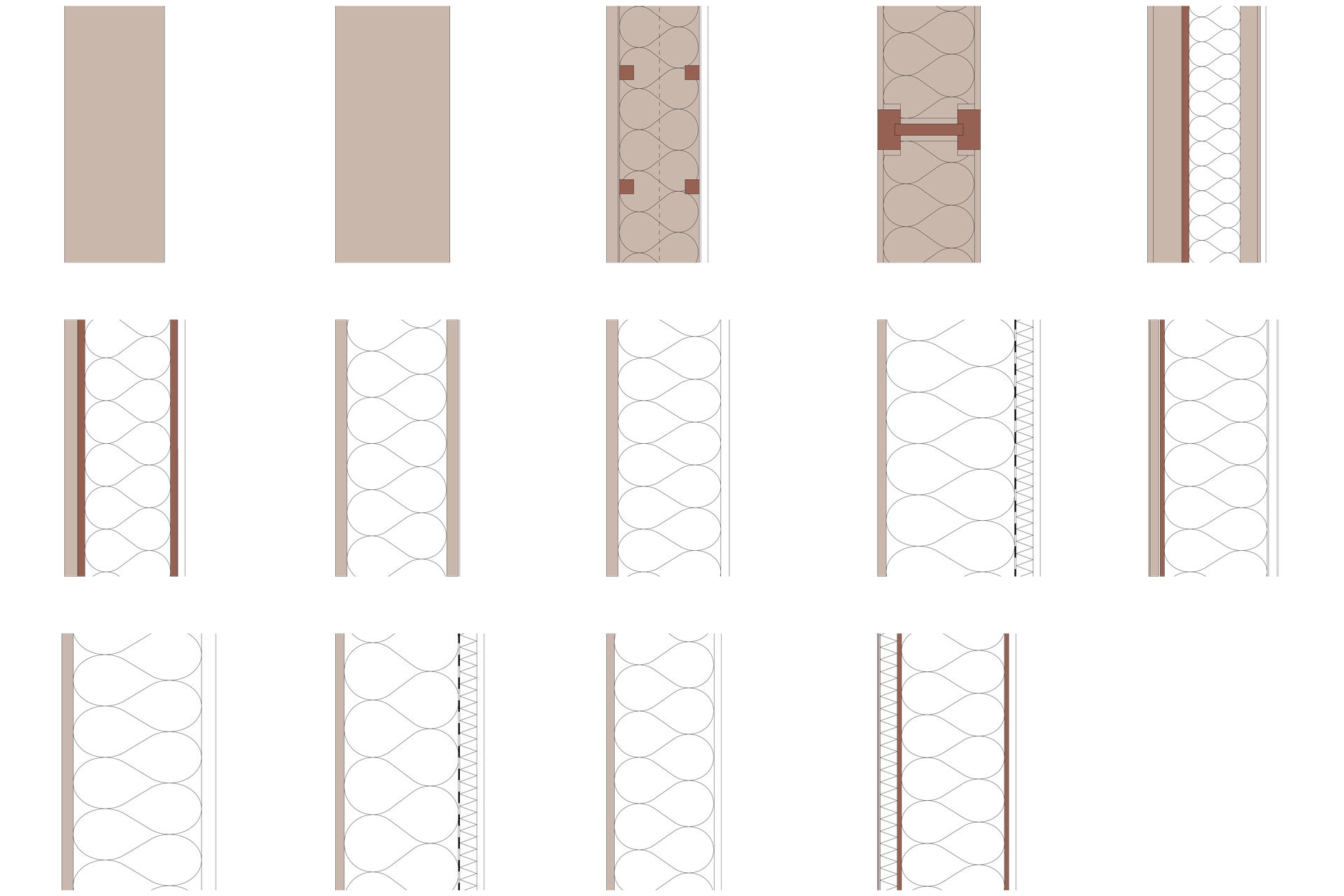06/2022
Eco prefab – clay techniques in precast
How advanced are the prefabrication techniques for building ecologically?
Michaela Fodor
Diploma in Architecture
E251-1 – Baugeschichte und Bauforschung
Supervisor: Andrea Rieger-Jandl
This thesis is dedicated to the use of earth in the prefabrication industry – an area with great potential for sustainability and climate protection. Earth building techniques offer an efficient alternative to conventional building materials such as concrete and steel and promote resource-saving construction. The historical review shows the importance of earth building techniques and their diverse applications. Building physics and building ecology parameters document the advantages of earth for contemporary buildings with regard to climate change and a pleasant indoor climate. The recyclability and disposal of clay are highlighted as often neglected sustainability aspects, especially in relation to a circular construction industry. To determine the current status of clay in the construction industry qualitative interviews were conducted with international construction companies. The research provides an inventory of clay in the prefabrication industry and of existing components and suppliers. It analyses ecological institutions and labels that include clay in certifications, as well as prefabrication options and methods.
The evaluations show that the potential of earth is not yet sufficiently exploited in the building sector, in teaching and in crafts. There are few suppliers of prefabricated earth building techniques, and outside Europe, added building materials are often used, limiting the environmental benefits of earth. There is a need for action to raise awareness of building with alternative building materials such as earth. Clear rules and standards could invalidate common concerns.
This thesis aims to bring into focus the knowledge and possibilities of earth in prefabrication in order to inspire and empower people to realise the potential of earth.
This thesis is dedicated to the use of earth in the prefabrication industry – an area with great potential for sustainability and climate protection. Earth building techniques offer an efficient alternative to conventional building materials such as concrete and steel and promote resource-saving construction. The historical review shows the importance of earth building techniques and their diverse applications. Building physics and building ecology parameters document the advantages of earth for contemporary buildings with regard to climate change and a pleasant indoor climate. The recyclability and disposal of clay are highlighted as often neglected sustainability aspects, especially in relation to a circular construction industry. To determine the current status of clay in the construction industry qualitative interviews were conducted with international construction companies. The research provides an inventory of clay in the prefabrication industry and of existing components and suppliers. It analyses ecological institutions and labels that include clay in certifications, as well as prefabrication options and methods.
The evaluations show that the potential of earth is not yet sufficiently exploited in the building sector, in teaching and in crafts. There are few suppliers of prefabricated earth building techniques, and outside Europe, added building materials are often used, limiting the environmental benefits of earth. There is a need for action to raise awareness of building with alternative building materials such as earth. Clear rules and standards could invalidate common concerns.
This thesis aims to bring into focus the knowledge and possibilities of earth in prefabrication in order to inspire and empower people to realise the potential of earth.
Diploma in Architecture
E251-1 – Baugeschichte und Bauforschung
Supervisor: Andrea Rieger-Jandl
